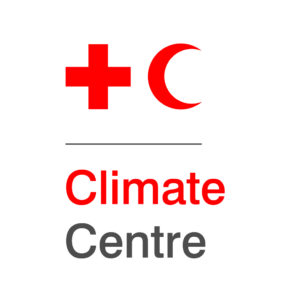HEAT ADAPTIVE ARCHITECTURE
DESIGN COMPETITION
(HAAD)
overview
Globally frequency, duration, and intensity of extreme heat events are increasing, and their impacts are intensified in cities due to the urban heat island effect. The Red Cross Red Crescent Climate Centre is at the forefront of supporting the IFRC and the National Societies, vulnerable communities and cities to reduce the adverse impact of extreme heat.
The 2023 IPCC report indicates that cities are places where observed climate change has caused adverse impacts on human health, livelihoods and key infrastructure (high confidence), and that these impacts are likely to continue to intensify as climate change progresses and the human population becomes increasingly urbanized (though rural populations also face heat risks). Increasing heat risks combined with rapid urbanization trends, especially in Africa and Southeast Asia, and aging population trends, for example in Europe, result in a need to scale action to prevent impacts on lives, health and wellbeing.
While buildings designed without consideration for heat -in cold and temperate climates- are at risk of summertime overheating, a growing number of people living informally will face potentially severe impacts from heat stress that have previously been overlooked or underestimated. Architects, engineers and city planners play a crucial role in addressing both the causes and effects of climate change through the design of the built environment, public spaces, and selection of construction materials, particularly in cities.
We believe that innovative design thinking is key to developing practical solutions that can easily be adapted by the most affected population groups to reduce the adverse impacts of extreme heat. This design competition aims to stimulate creative/adaptive thinking among today’s architecture/urban design students to envision a climate adaptive future in cities and come up with innovative building designs to tackle the heat risks.



eligibility
This competition is open to upper-level students (third year or above, including graduate students) from any architecture and/or urban design departments of higher education institutions.
In case of a team submission, the team can also include students from other disciplines such as civil engineering, environmental science, industrial engineering. However the lead of the team has to be from the architecture and/or urban design departments.
Students are required to work under the direction of a faculty sponsor. You can download the template for faculty sponsorship here.
Submissions will be accepted for individual as well as team projects. Teams must be limited to a maximum of three students.

awarding process
The competition will be completed in two stages.

Stage 1:
Development of designs
An expert jury will evaluate the submissions according to the below criteria and choose ten (10) highest ranking designs to proceed to the next stage. Winners and their faculty sponsors will be notified of the competition results directly.

Stage 2:
Refinement of the selected designs
In this stage, the top ten ranking students/teams will receive a stipend to develop a prototype of their design and receive mentorship to improve their designs. The final designs will be presented to the jury who will select the top three (3) designs as the winners.
Models of winning projects will be 3D printed and displayed at the COP 30 and other global events that Climate Centre participates in. Winning projects will also be promoted among the global network of 191 Red Cross Red Crescent National Societies and through the Global Heat Health Information Network (GHHIN)

design criteria
The HAAD competition seeks compelling design submissions that meaningfully address the impacts of extreme heat in cities with innovative, sustainable and affordable structural solutions for the most vulnerable population groups (elderly, isolated people, young children). Emphasize will be on adapting to projected temperature rise in different climate zones and designing for resilience through a cohesive and beautiful architectural understanding.
Selected resources:
- IFRC report ‘Heat through the eyes of the most vulnerable: perceptions and pathways to action’,
- IFRC Heat Toolkit
- Heat Action Day
- Global Heat Health Information Network (GHHIN)
Structures under this competition will include:
Residential housing units, including informal settlements and humanitarian context.
Micro and small/medium businesses including street vendors and schools.
Small-scale, versatile elements and structures for public spaces with a caveat that designs that only include tree planting will not be eligible.
Design Criteria:
Climate Responsiveness (30%): how well the design solution addresses the impacts on health, productivity and environment of extreme heat in cities for the most vulnerable population groups e.g. elderly, isolated people, young children among others.
Scalability/Adaptability (30%) how easily can the solution be scaled up and adapt to different climate zones and context (formal/informal/humanitarian) and population groups, particularly in low and middle income countries.
Innovation (20%): how innovative is the design in terms of responding to the context, use of local materials, ease of setting up/maintaining and affordability.
Presentation and communication (20%) the quality of the presentation in terms of being easy to understand, coherence of architectural language, clarity of purpose, function, usage, operability, cost, and materials.

SUBMISSION MATERIALS AND REQUIREMENTS
Application: To enter the competition, submit all required materials using the APPLY HERE button at the bottom of this page by 15 October 2025.
You can review the application form and save your entry before you are ready to submit.
GRAPHICS:
No more than two (2) digital boards at 60cm. x 100 cm. (JPEG files, no more than 20 MB each). Present diagrams or images that best display how the project meets the design criteria. All drawings should be presented at a scale appropriate to the design solution and include a graphic scale and north arrow.
NARRATIVE:
(300 words maximum summary): Include a short description of key assumptions used in the problem analysis leading to your design solution; the design approach, benefits and value to the intended users.
PROGRAM BRIEF:
(300 words maximum) Submissions should include a brief description of the building type, gross square footage, intended users, intended context (size of the city and climate zone). The brief should also clearly refer to how the design responds to the criteria listed above.
Winning projects will be required to submit high-resolution original files/ images for sharing publicly under the provisions of the “Creative Commons”.
You can submit the graphics, narrative and program brief either in one file or as separate files.
By uploading your files, you agree that the Climate Centre has the rights to use your winning submission, images and materials in a summary publication, online and in promotional and exhibition resources.
Additionally, you hereby warrant that the submission is original and that you are the lead student author of the design submission.

schedule
This competition is open to upper-level students (third year or above, including graduate students) from any architecture and/or urban design departments of higher education institutions. Students are required to work under the direction of a faculty sponsor. Submissions will be accepted for individual as well as team projects. Teams must be limited to a maximum of three students.
JULY-SEPTEMBER 2025
Information sessions
15 OCTOBER 2025
Submission deadline
30 NOVEMBER 2025
Top 10 selected designs announcement
DECEMBER–JANUARY 2026
Mentoring
FEBRUARY–MARCH 2026
Refining designs and prototypes
END OF MARCH 2026
Winners announced
MEET THE JURY MEMBERS
MEET THE JURY MEMBERS

David Sanderson

Eddie Wasswa Jjemba

Aynur Kadihasanoglu

Sandra D'Urzo

Ramiz Khan

Eefje Hendriks

Karina Izquierdo
TERMS AND CONDITIONS
- The decision of the jury will be final and binding.
- The participants grant the organisers (Climate Centre) the right to promote and publish any or all of the entries on any platform from any location for non-commercial, research, educational, and development purposes. Any material that is published will be duly credited to the authors.
- Participants of the competition agree that the work they are submitting has not been submitted to any other competition before the result of this competition is released.
- The organisers are not responsible for any expenses incurred by the participants for the research purposes of this competition.

